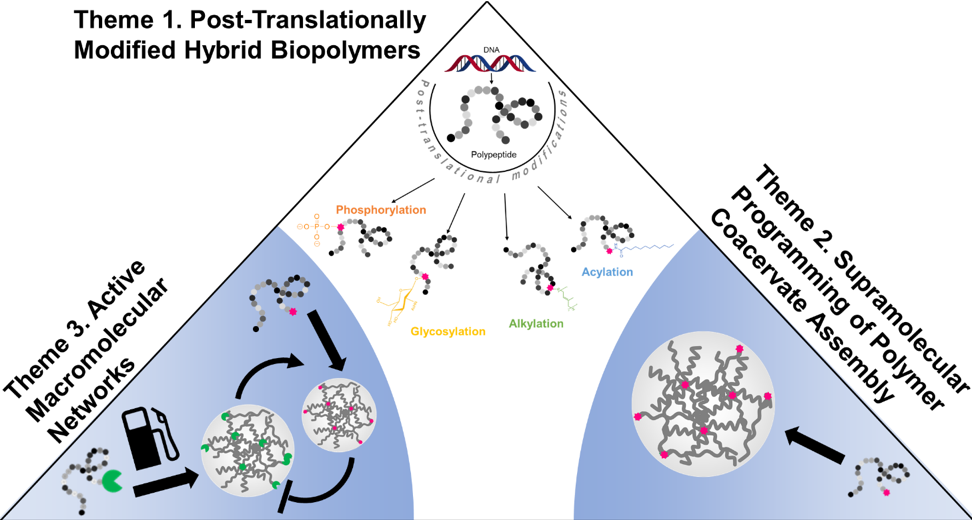Our research will leverage the recent advances in synthetic and macromolecular chemistry, recombinant protein expression, and emergent biotechnology tools to create polymer-based material systems as innovative solutions for the complex health, national security, energy, and environmental challenges in the twenty-first century.

Addressing many of these challenges will require ground-breaking advances in the synthesis, processing, and properties of polymers and biomaterials. Therefore, we must develop new functional materials from renewable sources, engineer desired material properties at the sequence level, and move beyond today’s near-equilibrium static materials toward adaptive active materials. Our laboratory will pursue these broad themes at the interface of chemistry, biology, and materials science.
We are interested in solving a challenging problem plaguing the field of protein-based biomaterials: the limited repertoire of biological building blocks, which severely restricts the design space available to researchers. We will harness the power of post-translational modifications to develop facile, scalable, and inexpensive methods to synthesize hybrid protein-based biomaterials functionalized with non-proteinogenic components. We anticipate that these materials will find numerous biomedical applications and look forward to expanding their use into emerging fields, such as immunomodulation.
The second part of our research program will focus on creating smart coacervates, a macromolecular-rich phase resulting from the liquid-liquid phase transition of polymer solutions. Inspired by the assembly of intrinsically disordered proteins into functional membraneless organelles, we will develop supramolecular platforms to program the assembly of polymer-rich coacervates. To achieve this goal, we will study the phase behavior of sequence-defined hybrid materials designed in the first research theme. We will expand this design space through chemoenzymatic attachment of synthetic supramolecular motifs to these (bio)polymers when the biogenic synthesis is not possible. Ultimately, we are interested to control the dynamics of the coacervate formation through this strategy and to apply our findings to the design of novel coacervate-based delivery platforms.
Finally, inspired by the dynamics and adaptivity of living biological systems, our group will design, and study coacervate-based dynamic macromolecular networks that actively convert energy and communicate through feedback loops. These two properties are key characteristics of biological active matter and thus are of fundamental value to designing the next-generation of material systems that can autonomously adapt in response to complex stimuli.
